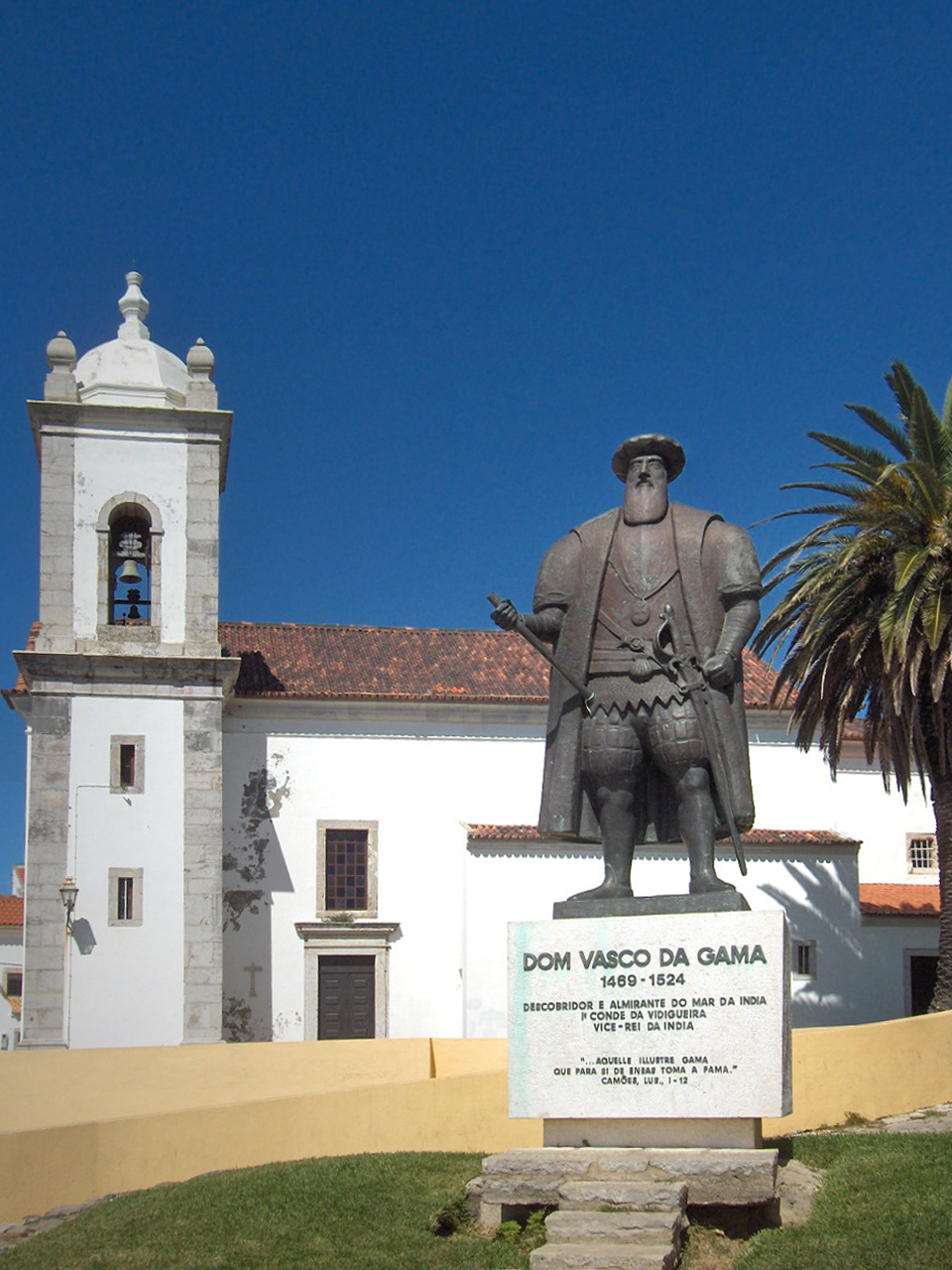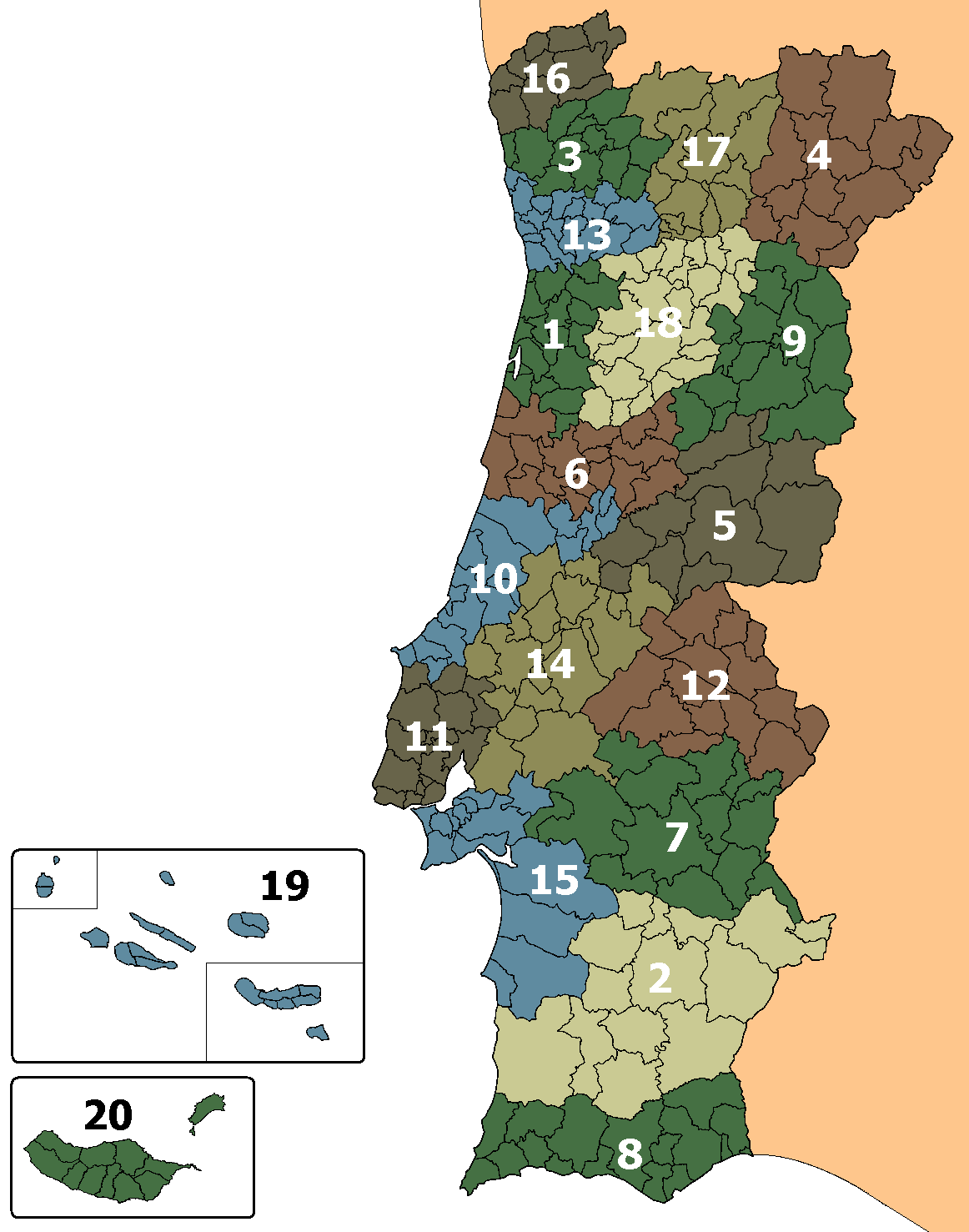|
Vidigueira
Vidigueira ( or ) is a town and a municipality in the District of Beja in Portugal. The population in 2011 was 5,932, in an area of 316.61 km2. The present Mayor is Manuel Rosa Narra, elected by the Unitary Democratic Coalition. The municipal holiday is Ascension Day. The archaeological site of the Roman Ruins of Villa Áulica and Convent of São Cucufate are situated near Vidigueira. Parishes Administratively, the municipality is divided into 4 civil parishes ('' freguesias''): * Pedrógão * Selmes * Vidigueira * Vila de Frades Notable people * Vasco da Gama (c.1460s – 1524) the Portuguese navigator, was made Count of Vidigueira by King Manuel I on the return from his discovery of the maritime route from Europe to India * Achilles Statius (1524 in Vidigueira – 1581) humanist poet and commentator * The father of Baruch Spinoza (1662-1677) the Dutch philosopher, lived in Vidigueira in the 17th century, before escaping from the Portuguese Inquisition to the Dutch Re ... [...More Info...] [...Related Items...] OR: [Wikipedia] [Google] [Baidu] |
Count Of Vidigueira
Count of Vidigueira (in Portuguese ''Conde da Vidigueira'') was a Portuguese comital title of nobility awarded by King Manuel I of Portugal to Dom Vasco da Gama, who discovered the maritime route from Europe to India. The title was created by a royal decree issued in Évora on 29 December 1519, after an agreement signed in 7 November between Vasco da Gama and Dom Jaime, Duke of Braganza, who ceded him the towns of Vidigueira and Vila de Frades, granting Vasco da Gama and his heirs and successors all the revenues and privileges related. Vasco da Gama was then the 1st Admiral of the Seas of India and in 1524 would become the 6th Governor of Portuguese India under the title of 2nd Viceroy. Following the expulsion of the Philippine Dynasty from the throne of Portugal in 1640, the new King John IV of Portugal granted this family the new title of Marquis of Nisa (Portuguese: ''Marquês de Nisa'') by a royal decree dated October 18, 1646. When the 8th Marchioness and 8th Countess, Maria ... [...More Info...] [...Related Items...] OR: [Wikipedia] [Google] [Baidu] |
Vasco Da Gama
Vasco da Gama, 1st Count of Vidigueira (; ; c. 1460s – 24 December 1524), was a Portuguese explorer and the first European to reach India by sea. His initial voyage to India by way of Cape of Good Hope (1497–1499) was the first to link Europe and Asia by an ocean route, connecting the Atlantic and the Indian oceans. This is widely considered a milestone in world history, as it marked the beginning of a sea-based phase of global multiculturalism. Da Gama's discovery of the sea route to India opened the way for an age of global imperialism and enabled the Portuguese to establish a long-lasting colonial empire along the way from Africa to Asia. The violence and hostage-taking employed by da Gama and those who followed also assigned a brutal reputation to the Portuguese among India's indigenous kingdoms that would set the pattern for western colonialism in the Age of Exploration. Traveling the ocean route allowed the Portuguese to avoid sailing across the highly disputed Medit ... [...More Info...] [...Related Items...] OR: [Wikipedia] [Google] [Baidu] |
Vidigueira DOC
Vidigueira () is a Portuguese wine region centered on the Vidigueira municipality in the Alentejo region. The region was initially an '' Indicação de Proveniencia Regulamentada'' (IPR) region, then elevated to '' Denominação de Origem Controlada'' (DOC) status. In 2003, it became one of eight subregions of the Alentejo DOC. Its name may still be indicated together with that of Alentejo, as Alentejo-Vidigueira. (reflects situation as of July 31, 2009) Within Alentejo DOC, this subregion is bordered by the Reguengos sub ... [...More Info...] [...Related Items...] OR: [Wikipedia] [Google] [Baidu] |
Achilles Statius
Achilles Statius (or Aquiles Estaço) (12 June 1524, Vidigueira – 17 September 1581) was a Portuguese humanist and writer, since 1555 living in Rome, where he was a secretary of the pope. Achilles Statius is now mostly known from his extensive Latin commentary to Catullus Gaius Valerius Catullus (; 84 - 54 BCE), often referred to simply as Catullus (, ), was a Latin poet of the late Roman Republic who wrote chiefly in the neoteric style of poetry, focusing on personal life rather than classical heroes. His ..., published in 1566. Works * * * * * * External links * 1524 births 1581 deaths People from Vidigueira Portuguese Renaissance writers Portuguese Renaissance humanists 16th-century Portuguese people {{Portugal-writer-stub ... [...More Info...] [...Related Items...] OR: [Wikipedia] [Google] [Baidu] |
List Of Municipalities Of Portugal
This is a list of the municipalities of Portugal. Portugal is divided into 18 districts ( pt, distritos) and 2 autonomous regions (), Azores and Madeira. The districts and autonomous regions are further subdivided into 308 municipalities of Portugal ( or ). Usually, a municipality is named after its largest or historically most important town or city. Municipalities are typically much larger than the city or town after which they are named. Overview of districts List Maps File:Eleições autárquicas portuguesas de 2017.png, Ruling parties per municipality (2017-2021) File:Portuguese municipalities area.PNG, The 20 biggest and the 20 smallest municipalities (2011) File:Portuguese municipalities population1.PNG, The 20 most and the 20 least populated municipalities (2011) File:Portuguese municipalities density1.PNG, The 20 most and the 20 least densely populated municipalities (2011) See also * Subdivisions of Portugal * Municipalities of Portugal * List of citie ... [...More Info...] [...Related Items...] OR: [Wikipedia] [Google] [Baidu] |
Beja District
The Beja District () is located in southern Portugal. The district capital is the city of Beja. It is the largest district of the country by area, and constitutes around 11% of its area. Municipalities The district is composed of 14 municipalities: * Aljustrel * Almodôvar * Alvito * Barrancos * Beja * Castro Verde * Cuba * Ferreira do Alentejo * Mértola * Moura * Odemira * Ourique * Serpa * Vidigueira Summary of votes and seats won 1976-2022 , - class="unsortable" !rowspan=2, Parties!!%!!S!!%!!S!!%!!S!!%!!S!!%!!S!!%!!S!!%!!S!!%!!S!!%!!S!!%!!S!!%!!S!!%!!S!!%!!S!!%!!S!!%!!S!!%!!S , - class="unsortable" align="center" !colspan=2 , 1976 !colspan=2 , 1979 !colspan=2 , 1980 !colspan=2 , 1983 !colspan=2 , 1985 !colspan=2 , 1987 !colspan=2 , 1991 !colspan=2 , 1995 !colspan=2 , 1999 !colspan=2 , 2002 !colspan=2 , 2005 !colspan=2 , 2009 !colspan=2 , 2011 !colspan=2 , 2015 !colspan=2 , 2019 !colspan=2 , 2022 , - , align="left", PS , , 32.0 , , 2 , , 22.0 , , ... [...More Info...] [...Related Items...] OR: [Wikipedia] [Google] [Baidu] |
Towns In Portugal
A ''vila'' is a town in Portugal. It does not necessarily correspond to a ''municipality''. There are 533 towns in Portugal. Some towns are the seat of municipality ('municipio'); others belong to a municipality. Alphabetically, the towns are as follows: Source: Instituto Nacional de Estatística A * A dos Cunhados * A dos Francos * Abragão * Abraveses * Aguada de Cima * Águas Santas (in Maia Municipality) * Aguiar da Beira * Alandroal * Albergaria-a-Velha * Alcains * Alcanena * Alcanhões * Alcantarilha, in Silves Municipality * Alcobertas * Alcochete * Alcoutim * Aldeia do Carvalho * Alenquer * Alfândega da Fé * Alfarelos ( Soure Municipality) * Alfeizerão * Algés, Oeiras Municipality * Algoz * Algueirão-Mem Martins, Sintra Municipality * Alhadas * Alhandra * Alhos Vedros * Alijó * Aljezur * Aljubarrota * Aljustrel * Almancil * Almeida * Almendra * Almodôvar * Almofala, Castro Daire Municipality * Alpendurada * Alpiarça * Alter do Chão * Alva ... [...More Info...] [...Related Items...] OR: [Wikipedia] [Google] [Baidu] |
District Of Beja (Portugal)
The Beja District () is located in southern Portugal. The district capital is the city of Beja. It is the largest district of the country by area, and constitutes around 11% of its area. Municipalities The district is composed of 14 municipalities: * Aljustrel * Almodôvar * Alvito * Barrancos * Beja * Castro Verde * Cuba * Ferreira do Alentejo * Mértola * Moura * Odemira * Ourique * Serpa * Vidigueira Summary of votes and seats won 1976-2022 , - class="unsortable" !rowspan=2, Parties!!%!!S!!%!!S!!%!!S!!%!!S!!%!!S!!%!!S!!%!!S!!%!!S!!%!!S!!%!!S!!%!!S!!%!!S!!%!!S!!%!!S!!%!!S!!%!!S , - class="unsortable" align="center" !colspan=2 , 1976 !colspan=2 , 1979 !colspan=2 , 1980 !colspan=2 , 1983 !colspan=2 , 1985 !colspan=2 , 1987 !colspan=2 , 1991 !colspan=2 , 1995 !colspan=2 , 1999 !colspan=2 , 2002 !colspan=2 , 2005 !colspan=2 , 2009 !colspan=2 , 2011 !colspan=2 , 2015 !colspan=2 , 2019 !colspan=2 , 2022 , - , align="left", PS , , 32.0 , , 2 , , 22.0 , , ... [...More Info...] [...Related Items...] OR: [Wikipedia] [Google] [Baidu] |
Baixo Alentejo (intermunicipal Community)
The Comunidade Intermunicipal do Baixo Alentejo (; English: ''Lower Alentejo'') is an administrative division in Portugal. It was created in 2009. It is also a NUTS3 subregion of the Alentejo Region. Instituto Nacional de Estatística, 18 March 2015 The seat of the intermunicipal community is Beja. Baixo Alentejo comprises 13 of the 14 municipalities of the [...More Info...] [...Related Items...] OR: [Wikipedia] [Google] [Baidu] |
Alentejo
Alentejo ( , ) is a geographical, historical, and cultural region of south–central and southern Portugal. In Portuguese, its name means "beyond () the Tagus river" (''Tejo''). Alentejo includes the regions of Alto Alentejo and Baixo Alentejo. It corresponds to the districts of Beja, Évora, Portalegre, and Alentejo Litoral. Its main cities are Évora, Beja, Sines, Serpa, Estremoz, Elvas, and Portalegre. It has borders with Beira Baixa in the north, with Spain (Andalucia and Extremadura) in the east, Algarve in the south, and the Atlantic Ocean, Ribatejo, and Estremadura in the west. Alentejo is a region known for its traditional polyphonic singing groups, similar to those found in Tuscany, Corsica, and elsewhere. History The comarca of the Alentejo became the Alentejo Province, divided into upper (Alto Alentejo Province) and lower (Baixo Alentejo Province) designations. The modern NUTS statistical region, Alentejo Region, was expropriated from the medieval provi ... [...More Info...] [...Related Items...] OR: [Wikipedia] [Google] [Baidu] |
Dutch Republic
The United Provinces of the Netherlands, also known as the (Seven) United Provinces, officially as the Republic of the Seven United Netherlands (Dutch: ''Republiek der Zeven Verenigde Nederlanden''), and commonly referred to in historiography as the Dutch Republic, was a federal republic that existed from 1579, during the Dutch Revolt, to 1795 (the Batavian Revolution). It was a predecessor state of the Netherlands and the first fully independent Dutch nation state. The republic was established after seven Dutch provinces in the Spanish Netherlands revolted against rule by Spain. The provinces formed a mutual alliance against Spain in 1579 (the Union of Utrecht) and declared their independence in 1581 (the Act of Abjuration). It comprised Groningen, Frisia, Overijssel, Guelders, Utrecht, Holland and Zeeland. Although the state was small and contained only around 1.5 million inhabitants, it controlled a worldwide network of seafaring trade routes. Through its tradin ... [...More Info...] [...Related Items...] OR: [Wikipedia] [Google] [Baidu] |
Portuguese Inquisition
The Portuguese Inquisition (Portuguese: ''Inquisição Portuguesa''), officially known as the General Council of the Holy Office of the Inquisition in Portugal, was formally established in Portugal in 1536 at the request of its king, John III. Although Manuel I had asked for the installation of the Inquisition in 1515 to fulfill the commitment of his marriage with Maria of Aragon, it was only after his death that Pope Paul III acquiesced. In the period after the Medieval Inquisition, it was one of three different manifestations of the wider Christian Inquisition, along with the Spanish Inquisition and Roman Inquisition. The Goa Inquisition was an extension of the Portuguese Inquisition in colonial-era Portuguese India. History The major target of the Portuguese Inquisition were those who had converted from Judaism to Catholicism, the Conversos (also known as New Christians or Marranos), who were suspected of secretly practicing Judaism. Many of these were originally Spanish J ... [...More Info...] [...Related Items...] OR: [Wikipedia] [Google] [Baidu] |



